Alright! So you’ve done some observing and you’re keen to buy garden seeds and get growing! You could simply go to an online search engine and type: “buy garden seeds in New Zealand*”. You’d get a long list (and some ads!) of places to buy seeds from. Easy as. However, in this post I’d like to share some thoughts on why you should give this simple action some more thought. A little longer than the previous posts in the series on how to start an edible permaculture garden in New Zealand. I do hope that it’s of enough interest that you’ll stick around to the end!
*Or anywhere else for that matter. If you don’t live in New Zealand then it wouldn’t make sense to buy seeds in NZ of course...
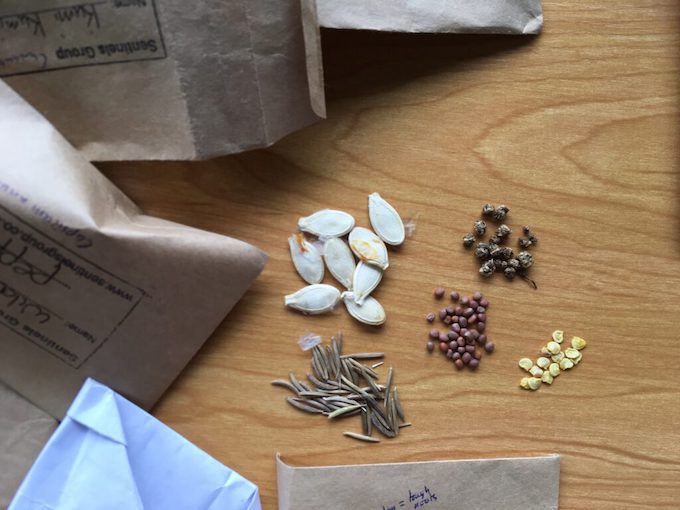
Think twice before you buy garden seeds
Now, I don’t want to get into politics and ideologies and all that too much. Yet I do want to share this website. It shows a detailed overview of how the “Big 4” agrochemical / seed companies control more than 60% of global seed sales. In essence this means that more than half of all seeds sold globally are in the hands only a handful of companies. They can control access, selection, growing methods, prices and what not.
Each time you buy seeds, you’re likely contributing to this centralisation without even knowing it. But, rather than focus on this ‘interesting’ fact, there’s plenty of other more positive reasons why you want to try to buy your seeds as local and small-scale as possible.
Resilience
Diversity is a key element of resilience. On a genetic level, for individual species and on an ecosystems level. Communities – be it animal, plant or another life form – that are diverse are often more resilient in the face of changes. In human communities this means having different perspectives on an issue. Many different skill-sets to draw on. Extensive social networks. As well as many other advantages compared to a more homogeneous group.
Sounds great, but what does resilience have to do with the garden seeds you buy?
Plant diversity
For many people in the world, our diets are scarily dependent on only a few handful of plants. It’s widely accepted that a whopping 40% to 50% of our caloric intake comes from just three plants: rice, wheat and maize!
It’s highly likely that a few of the plants in our diet will become impossible to grow in the near future. Due to climate change, disease pressure, increased soil salinity, etc. So when your diet exists of about 30 plant species and 10 drop out, do the math and you’ll realise that not much will be left to eat…
Yet there could be as much as 50 000 edible plant species in the world! And this is where our choices can make a difference. Most commercial plant species can be assured of a spot in the future. Huge sums of money and research are invested and therefore won’t be lost easily. But the majority of the 6000-7000 plant species once cultivated by humans run the risk of disappearing forever. With some already extinct, and many heading that way fast. Choosing less common, more unknown, non-commercial seeds (and therefore plant varieties) can help reverse this trend.
Genetic diversity
Besides plant diversity you want to think about genetic diversity. Which in this case means sexual promiscuity is a good thing! Well, at least for plants… As it helps ensure this genetic diversity (whether it’s good for humans is another story). Swapping genetic material with neighbours, wild plants, and anyone in the area helps ensure adaptability. Either through wind-pollination or by pollinators flying from one flower to another. It helps keep the gene pool mixed and variable.
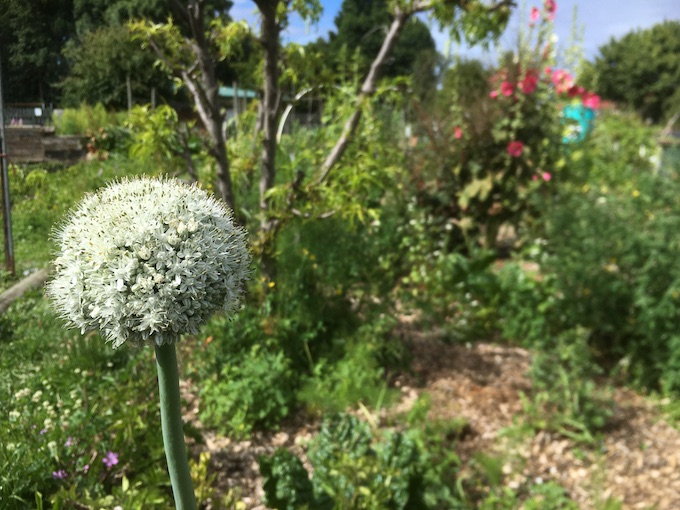
Besides this, when seeds are saved over multiple generations they become locally adapted. Not so much the first season, but more so over the long-term. Especially when plants with specific beneficial traits are selected by humans (e.g. large pumpkins that store well over winter). This is usually what is meant when people refer to heirloom or heritage seed varieties. (Yes, wanting to save seeds can be at odds with keeping the gene pool as diverse as possible. For example with pumpkins and squash. But that’s more detail than we have room for here!)
So, diversity in plant species and their genetics is absolutely essential. However, the complete opposite is usually the case for seeds grown on an industrial scale. It’s important for food security and food sovereignty. For resilience in an ever-changing world. Don’t get me wrong, I’m not saying you shouldn’t grow cabbages, tomatoes, and your favorite veges. But if you do, look out for local seeds or specific (heirloom) varieties. Save some seeds of your own. Besides this, reserve a little spot in your garden somewhere and grow some weird, funky, unusual and forgotten plant varieties.
Here’s a (non exhaustive*) list for ya.
Seed savers / seed exchange networks
A great way to access local seed resources is through a seed saver group. The name couldn’t be more straight forward, a group of people saving, and sharing seeds! Either amongst themselves or also sharing with a larger community. Ask around to find one near you, there’s likely to be one around (although it might take some effort to find it).
If there really isn’t a group in your area, set one up! It can be as easy as swapping seeds with your neighbours and expanding from there. Or maybe organise a get-together sometime in the autumn or winter in a local cafe. Post an ad in the local newspaper and invite every gardener you know! You might be surprised by the amount of people that show up.
Here are a few places to connect with and that can serve as inspiration:
Buy garden seeds
Trading, gifting and receiving are great ways to diversify your personal seed collection. But maybe you don’t have any seeds to start with. Or you’re looking for a specific plant. And to be fair, buying seeds is sometimes the only way to get them.
Whatever the reason, when buying seeds it’s important you try and make an effort to source your seeds from local, small scale distributors:
*This list is far from complete, of course. I hope to keep updating as I learn more and receive feedback. Also, if you’re more interested in buying plants (then why you reading this blog?!), have a look over here for plants.
How to grow plants from seed
But wait, now you know where to buy garden seeds, how do you actually grow plants from seed?
I mulched “my garden” quite heavily with a thick layer of compost and woodchips. Therefore direct sowing seeds would be a little difficult for most plants. Many would struggle to reach the sunlight before they exhaust their stored energy reserves. There’s some exceptions to this though. As with everything in life…
For example, broad beans can easily be sown under a thick layer of mulch. As they contain enough stored energy to push their first seed leaves (cotyledons) through the layers and towards the nutritious sunlight. Although strictly speaking not seeds, garlic and potatoes and the like can also easily be planted in a cosy bed of mulch. You could even use these to eradicate some lawn and grow food!

For most other seeds though it makes sense (in a mulched situation) to raise them to seedlings first and then to transplant. This way, the tiny plants aren’t smothered by a wave of wood chips and die. Whenever I transplant, the plants get properly soaked in water before. Often by submerging them completely in a bucket of compost-enriched water. After they’ve entered their permanent place they get another deep shower to keep them nice and hydrated after the shock of being moved.
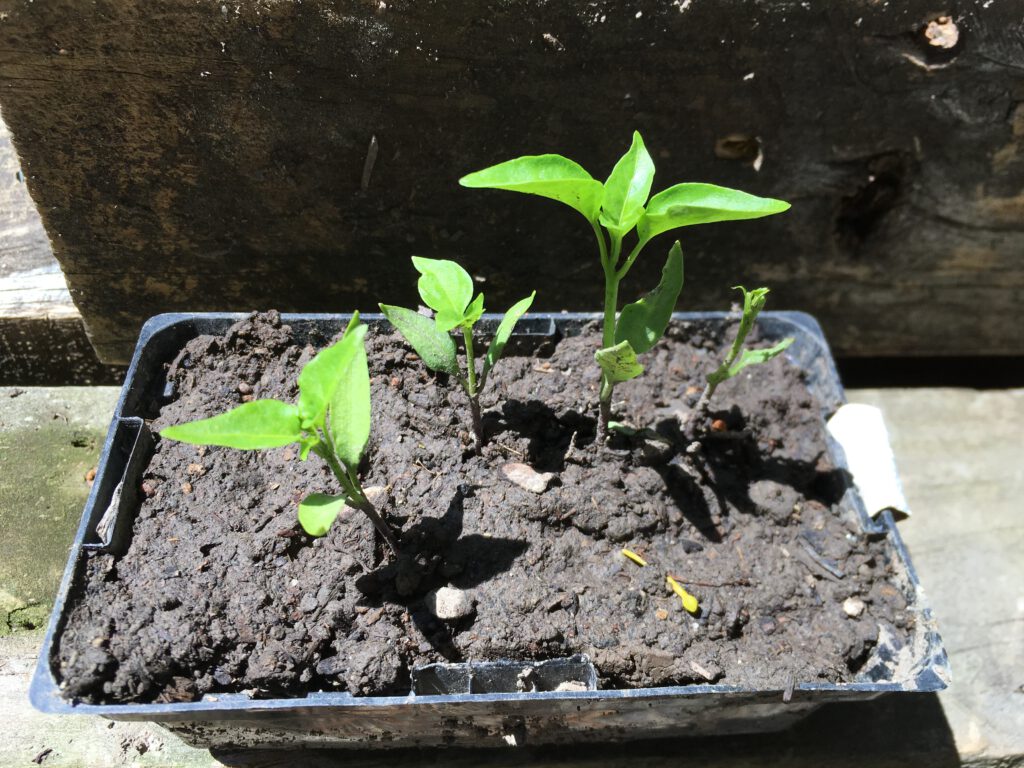
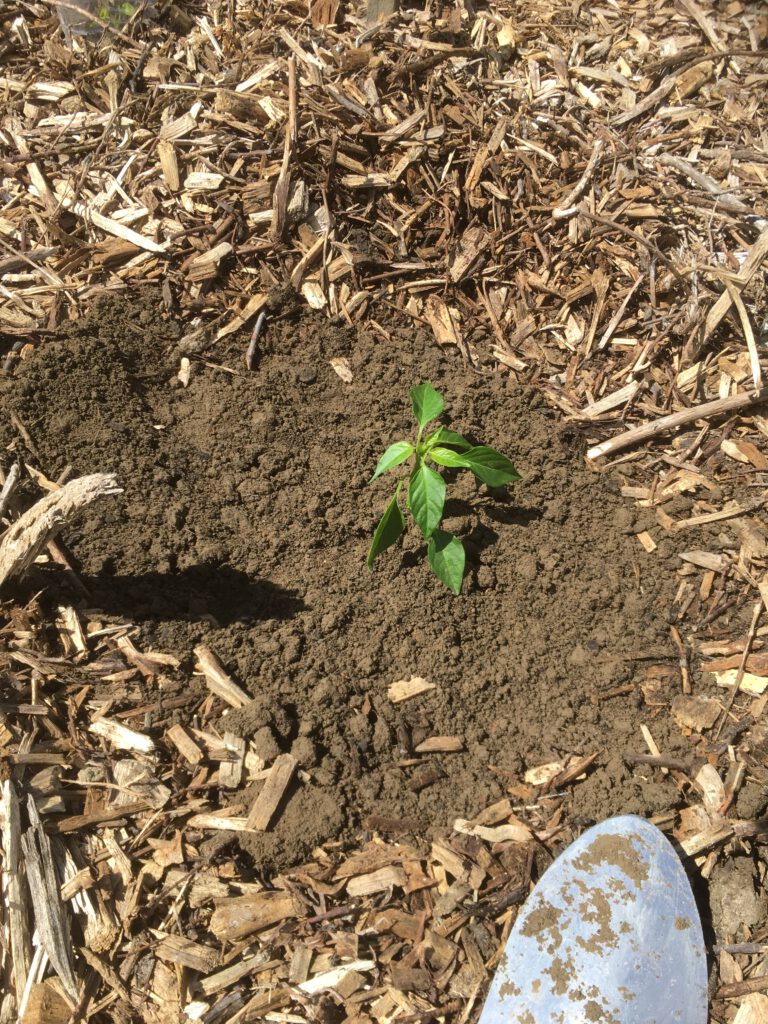
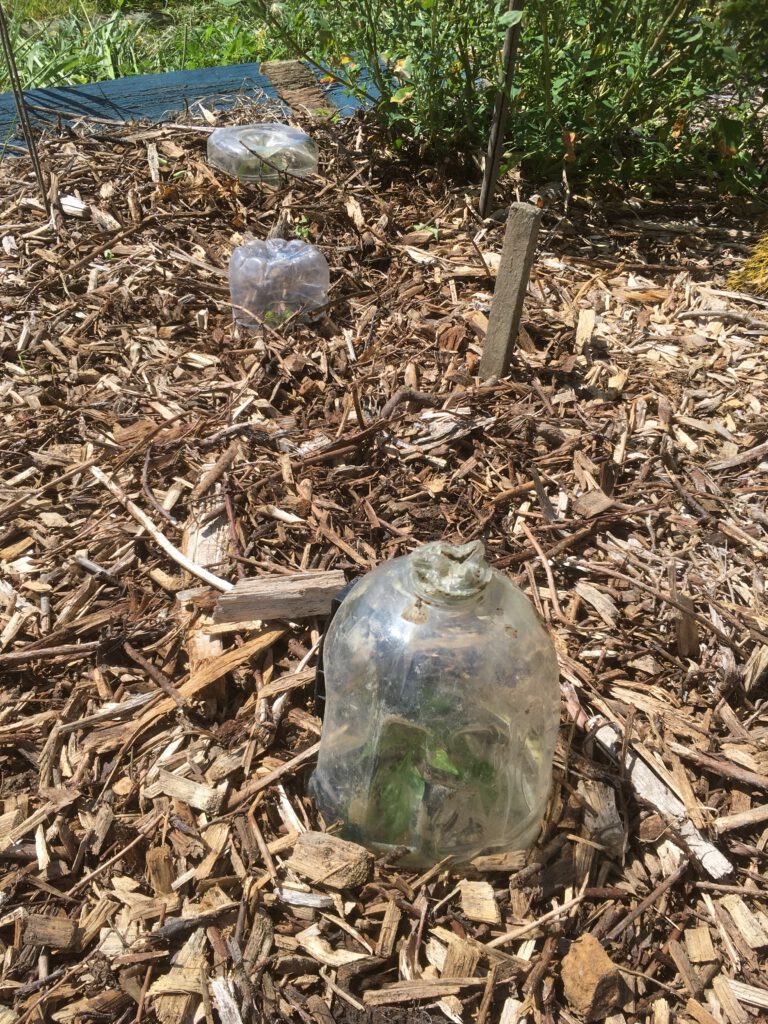
Simple vs. complex
According to the expert called myself, I would say there’s roughly two methods in which you can start plants from seed.
Simple: chuck some seeds in soil, keep it moist and place in a location with some light. Wait and hope for the best. Checking back every once in a while to see if they’ve germinated.
Complex: specifically follow instructions on the package, buy seed-raising mix, maybe even buy special equipment to raise seeds (e.g. shade cloth), monitor vigorously, speak words of encouragement daily. Well, you get the picture…
In most cases I tend to go for option 1. As simple as possible with the least fuss as possible (with the addition of loving words of encouragement, of course!). This means I usually grab whatever soil or compost I have available. No specifics. Nothing fancy. Letting the plants do most of the work. This also means that the success rate usually isn’t 100%
It’s a process!
The challenge, or learning opportunity, here is that you want to be able to distinguish the plant you sowed from the volunteers (= “weeds”). Although this takes some time to learn and recognise, you’ll often find that there’s only a dozen or so volunteers that will show up regularly. Once you get to know these you can take a more relaxed approach to sowing seeds. You might even accidentally learn that some of these “weeds” are edible of useful in another way!
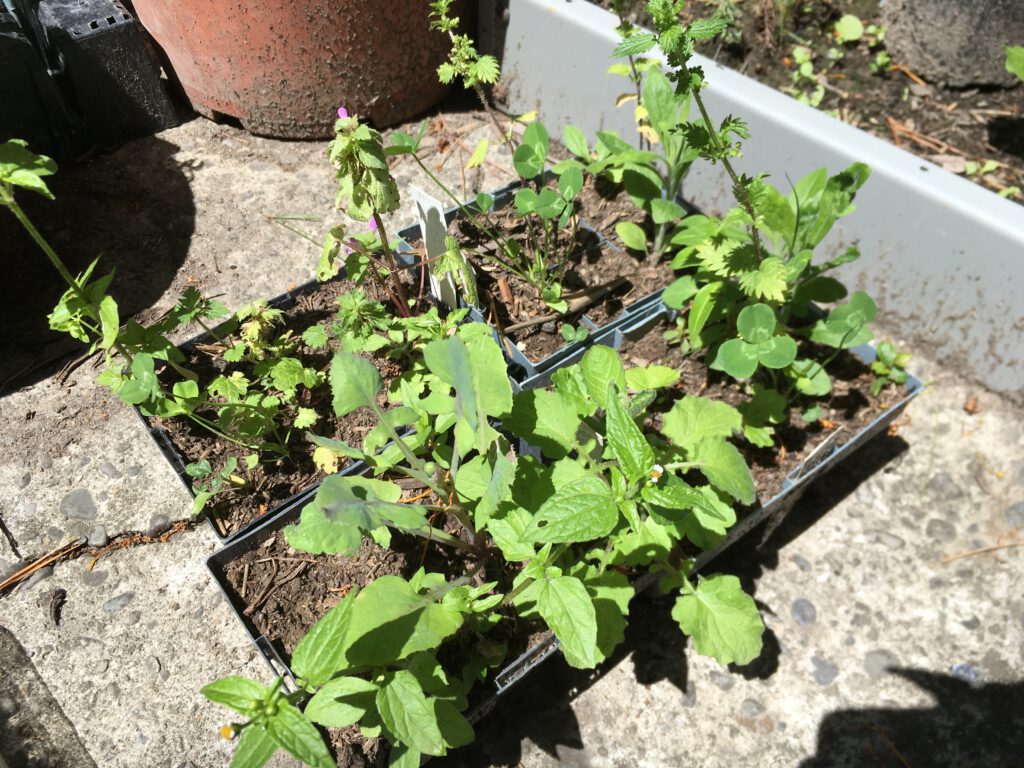
Start with a species that’s relatively easy to grow. For example: plants from the cabbage family or any type of lettuce. Buy a decent amount of seeds and start experimenting and observing. Try different methods. Get to know their seed leaves. Observe what other plants show up. Make some (mental) notes. Try, fail, try again. I can say from experience that it becomes quite intuitive over time.

Adding layers
Reading the above might give the impression that it’s all easy and no effort. Spoiler alert: that’s not always the case. I’ve failed many times. And there’s also instances where I put in more effort. For example, when I’ve received some seeds as a gift. Or when I’ve bought seeds from very specific/special plants. Some seeds are more delicate than others and need a little TLC to get them started in life. In that case, I will definitely focus on trying to get the germination rate as high as possible. I’ll even consider buying seed-raising mix. In all these cases it can make sense to invest some time, effort and money to ensure success.
Although I made an (arbitrary) distinction between simple and complex methods of sowing, rather I’d hope you can see it as a sliding scale. Keep it simple to get started. Adding more complexity later on in your growing career, and when necessary of course!
Now go get yourself some garden seeds!

With this post I hopefully planted a little seed in your head. To buy garden seeds should never be the same for you again. A lot of info, yet basically all you have to remember is: diversity, diversity, diversity. Diversity with regards to seeds for the same plant species. Diversity by growing a lot of different plants. And, by sourcing the seeds from diverse places and as locally as possible!
Besides this I want to stress that growing plants from seeds doesn’t have to be hard. Nor does it have to be as complex as some people make it out to be! Adding complexity can be nice, and sometimes even necessary. But don’t forget that plants (and their seeds) have been around way longer than humans have. We can help out but definitely aren’t essential.

